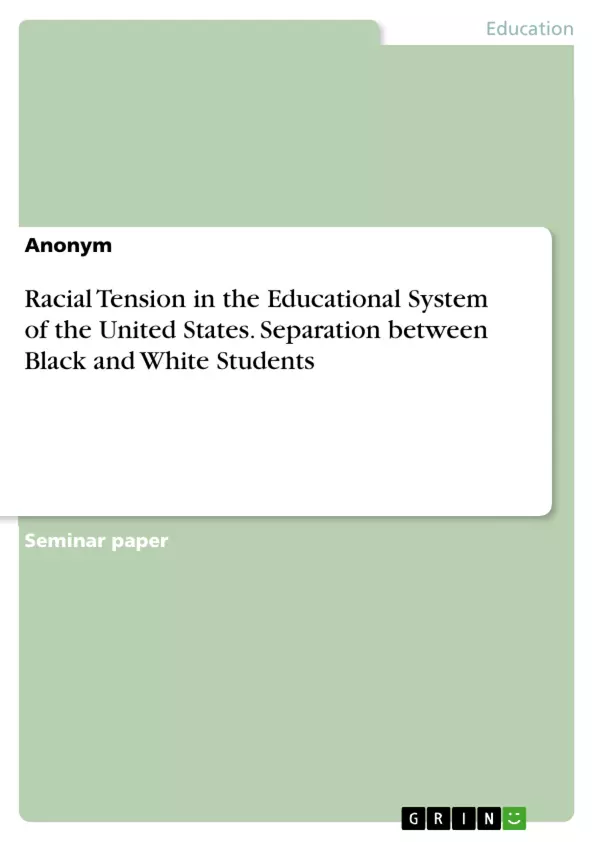The purpose of this term paper is to show how the educational system in the United States still separates black and white students, how racial tension affects the way black students are taught in schools, why black children are stereotyped as incapable of being educated and how diverse school settings benefit both white students and students of color.
The desegregation of public schools in the United States was one of the major goals of the Civil Rights Movement. The case Brown versus Board of Education in 1954 made the Supreme Court declare that it is unconstitutional to maintain or establish laws allowing separate schools for black and white students. While this case broke down the official barriers for black students to visit the same high achieving schools as white people and gain equal education, nearly seventy years later, the majority of black students still visit separated schools and have to deal with inequal treatment.
Inhaltsverzeichnis (Table of Contents)
- Introduction
- How does the Educational System Operate on the Color Line?
- Students of Color Still Visit Segregated Schools
- Segregated by Income
- School Choice Programs
- Segregated Schools Have Less Access to Resources
- Achievement Gap
- School to Prison Pipeline
- How Does Racial Tension Affect the Way Children are Taught in Schools?
- White Supremacy in the U.S Curriculum
- Biases
- Low Representation in Gifted Programs
- Lack of Understanding
- Zero-Tolerance Policies
- Why are Black Children Stereotyped as Incapable of Being Educated
- Definition of Racial Stereotypes
- Origin of Racial Stereotypes
- Physical Differences as Justification
- Negative Portrayal through Media
- Impact on the Self-concept of African Americans
- Benefits of Racially Integrated Schools
- Cross-Cultural Competence
- Improved Academic Achievement
- Conclusion
Zielsetzung und Themenschwerpunkte (Objectives and Key Themes)
This term paper aims to demonstrate the continued separation of black and white students within the U.S. educational system, analyze the impact of racial tension on the way black students are taught, explore the reasons behind the stereotyping of black children as incapable of being educated, and highlight the benefits of racially integrated schools.
- The persistence of segregation in American schools despite the Brown v. Board of Education decision
- The influence of racial tension on educational practices and outcomes for black students
- The root causes and consequences of racial stereotypes that hinder the educational success of black children
- The positive impact of integrated school settings on academic achievement and cultural understanding
- The role of socioeconomic factors and resource allocation in shaping educational disparities
Zusammenfassung der Kapitel (Chapter Summaries)
- The introduction establishes the context of school desegregation in the United States, highlighting the ongoing disparities despite legal progress. It sets the stage for exploring the multifaceted challenges faced by black students in the educational system.
- Chapter 2 delves into the ways in which the U.S. educational system operates on the color line. It examines the persistence of segregated schools, the impact of income segregation, the limitations of school choice programs, the unequal distribution of resources, the achievement gap, and the school-to-prison pipeline.
Schlüsselwörter (Keywords)
This term paper explores the complexities of racial segregation, achievement gaps, racial stereotypes, and the impact of these issues on education in the United States. Key concepts include school desegregation, socioeconomic status, resource allocation, teacher quality, racial bias, and the benefits of integrated school settings.
- Quote paper
- Anonym (Author), 2022, Racial Tension in the Educational System of the United States. Separation between Black and White Students, Munich, GRIN Verlag, https://www.grin.com/document/1363241



